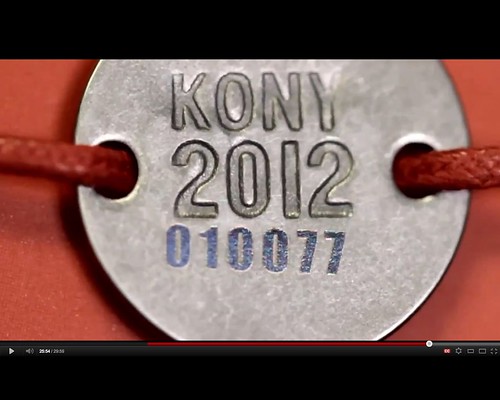 |
| Photo Credit: k-ideas |
The Kony 2012 video, which was uploaded to YouTube on March 5, 2012, has over 81,000,000 YouTube views as of this post. That is a staggering number for a video that has only been up for less than two weeks.
Since this video went viral, there has been a number of concerns raised about the Kony 2012 efforts. Questions have been brought forth concerning the veracity of the facts presented in the video, where the money is going that is raised and whether this approach is the best way to help the people of that region of Africa.
Since I don't know enough about Invisible Children or the current realities in the areas which Kony's reach has spread, I won't attempt to pontificate on this organization or the work being done in Uganda and nearby countries. I will leave that to those that are much more familiar with the situation than I am.
What I would like to do is draw out some principles from the video for those of that serve in the non-profit world and consider how those principles might apply to the work that we do.
Here is what I think the Kony 2012 video got right:
1. A need is exposed. People are being killed. Children are being enlisted to fight in the army at a young age. Terror is ravaging a country. These were the types of things that were highlighted in the video. We live in a world of injustice and sin and surfacing a specific need in a specific place for a specific people captures the heart of those that care about wrongs in the world.
2. The need is personalized. Filmmaker Jason Russell, who narrated the film, introduces us to his son Gavin and shares some of the story through his eyes. He then lets us meet Jacob, a Ugandan young man whose family has been affected by Kony's army. For those of us on another continent, these brutalities may be too distant to really hit home for us. But realizing that it is children that are suffering and to be able to meet one of those children helps our hearts to become engaged in the story.
3. A solution is offered. Stop Joseph Kony by letting everyone in the world know who he is and what he has done. The video tells us that if Kony (and others like him) can be stopped from the reigns of terror, than children will stop suffering and the world will be a better place for future generations.
4. People of influence are invited to become part of the solution. Termed in the video as "Culture Makers" and "Policy Makers", key celebrities and politicians are targeted to use their influence to let the world know about the Kony 2012 campaign. By strategically targeting these influential people, the word spreads rapidly, seemingly overnight.
5. WE are invited to become part of the solution. Buy an action kit and wear a bracelet. Tell some friends. Give a few bucks. Spread the word in your community. The video doesn't just expose the need and offer a solution, it tells us that we can play a part. It tells us that we can change the world if we all do what we can.The effectiveness of the Kony 2012 campaign has yet to be determined. Mammoth amounts of YouTube views doesn't necessarily result in changing the world. Piano playing cats and double rainbows can tell us that. And the concerns about the video need to be addressed before many people will engage beyond watching the video or tweeting about the campaign.
However, there's much that can be learned with the approach that has been taken here as it relates to whatever cause we are each a part of. That doesn't necessarily mean that we all need to make a slick 30 minute video. But we can apply some of the principles contained in the video for the causes that we feel most passionately about.
2 comments:
Agreed! Also I would like to say that your school greatly disappointed me and my bracket. What happened blue??
Sorry, Tyshan. They disappointed me, too.
But it doesn't look like your bracket is suffering very much compared to the rest of us. :)
Post a Comment